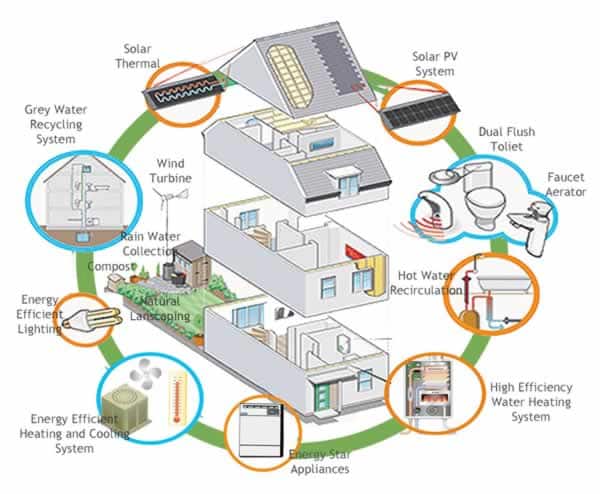Global warming and global climate changes forces us to reconsider our energy sources. If we want to stop or slow down these changes we must consider using renewable energy sources in every aspect of our life, from industry, transportation and, most importantly, our homes. If we want to see changes we must not wait for someone else to start with them, changes must come from all of us and when the majority change their personal habit, industry will have no other choice than to change accordingly.

By our opinion, implementing renewable energy sources in our home is the most important step in changing things and that is why we decided to make a review of this exceptional book.Renewable Energy & Sustainable Design combines common forms of renewable energy with green building practices, offering an exciting and engaging introduction to this field. Focusing on both the theory and practice of producing electrical energy from non-fossil fuel sources, this book evaluates different types of building materials and design options while assessing available forms of renewable energy–including solar, wind, hydro, biomass, tidal and geothermal. By examining the benefits and limitations involved in harnessing each of these renewable energies, this book seeks to provide you with an objective and informed viewpoint, with the ultimate purpose of minimizing harmful impacts on individuals, communities, and the environment.

About the author
Scott Grinnell is an associate professor of physics at Northland College, where he has taught since 2002. Dr. Grinnell enjoys leading students through installations of renewable energy systems and organizing worldwide travel to study sustainable communities and green building practices. Since 1997 he has taught courses in mathematics, engineering, physics, meteorology, renewable energy and sustainable design. He earned a bachelor’s degree in physics from California Polytechnic State University and received his doctorate in geophysics from the University of Washington.

The book begins with an overview of the green building practices, addressing principles, materials and designs that together can create comfortable structures and allow individuals and communities to live healthfully and productively. The book continues by introducing energy, the physical laws that govern its use, conventional power generation and common forms of renewable energy. The last topic occupies six chapters, each of which covers a different form of renewable energy.
Beginning with a brief historical background, these chapters examines the basic science and current technology utilized to generate energy and then continue with an evaluation of the benefits, limitations and enviromental impacts. This book offers an overview of the benefits and drawbacks of renewable energy systems and building designs using general scientific principles, while attempting to avoid overly complex and technical material.

This book attempts to adress the fundamental aspects of human shelter and energy supply, and to serve as a platform for investigating the greater subject of creating a global sustainable society. The book provides information on a personal scale whenever possible, using real-life case studies and examples. Ultimately, this book is intended to encourage a hopeful perspective for the future that empowers solutions to our global concerns.
The Renewable Energy & Sustainable Design offers over 300 pages of valuable information for everyone interested in implementing renewable energy systems and we recommend it because it:
- Effectively combines green building practices and renewable energies to bring together two interrelated aspects crucial to achieving healthy and sustainable communities.
- Accurately highlights current information from the field to ensure that students remain informed of the latest advances in renewable energies and sustainable design.
- Reader-friendly and engaging, each chapter methodically walks the student through theories and practices with practical examples, problems, and case studies.
- Visually-appealing, each concepts is clearly supported through full-color graphics and photos to enhance learning.
- Further learning features interwoven throughout the text offer opportunities for students to learn, in further detail, additional information related the applicable topic.







i saw drawing or images that you have put of solar panels on slanted roof tops. so maintainance and cleaning annually will be a major problem sinxce dirt accumulates. i plan to construct a tin roof with truss and support for future mounting of solar panels…..can you advise a good book or pdf for same . India, this is.
Very true! Makes a change to see soemnoe spell it out like that. :)